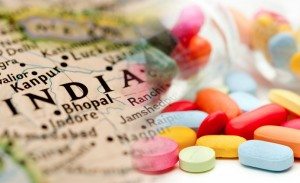 The World Health Organization (WHO) estimates that one in five drugs made in India are fake and that fake pharmaceuticals are a $75 billion dollar global industry. A recent New York Times article points to India as one of the countries at the forefront of the problem, selling fake drugs locally and online to unsuspecting consumers worldwide.
The World Health Organization (WHO) estimates that one in five drugs made in India are fake and that fake pharmaceuticals are a $75 billion dollar global industry. A recent New York Times article points to India as one of the countries at the forefront of the problem, selling fake drugs locally and online to unsuspecting consumers worldwide.
The Food and Drug Administration recently conducted a series of raids in India to uncover counterfeit drugs. The raids yielded large quantities of substandard medicines and resulted in several arrests. However, in India, the penalties for making and selling counterfeit medicines are minimal, the convictions are rare, and the profits are enormous. Since the raids late last year, the problem has only gotten worse.
In fact, counterfeit medicines in India are harming the most vulnerable populations. They were recently found at a pediatric hospital in Kashmir and are suspected to have played a role in hundreds of infant deaths in the past few years. “Some of the fake tablets were also used by pregnant women in the post-surgical prevention of infections,” said Dr. M. Ishaq Geer, senior assistant professor of pharmacology at the University of Kashmir. “That’s very serious.”
As you can see, the public-health consequences of the counterfeit drug trade are dire. Nearly 100,000 people die every year either because they’re poisoned by bad ingredients in counterfeit drugs or because the counterfeit doesn’t treat their illness. Limited access to medical care and effective treatments, the common practice of self-medication, and the availability of counterfeit drugs have also exacerbated drug resistance.
Even with the apparent need, India’s Central Drugs Standard Control Organization, the country’s drug regulator, has a staff of 323, about 2% of the size of the FDA, and expansion is not in the plans. Unless serious steps are taken to improve the quality of the Indian drug supply, the global spread of unsafe pharmaceuticals will persist and the country’s substandard drug trade will continue to represent a huge public health threat that extends far beyond the subcontinent.
In light of this information about the magnitude of the counterfeit drug problem in India and worldwide, if you are unsure whether your prescription is genuine or not, visit WebMD online to look up the drug’s description and appearance. You can look up an image of the prescription drug in question, and compare it to what you have. If they do not look the same, do not take them, as they may be harmful to your health. In addition, use the LegitScript pharmacy-checker tool and search for a pharmacy website to see if it’s safe before you buy.
####
The Center for Safe Internet Pharmacies (CSIP) and our 13 member companies have the shared goal of helping address the growing problem of consumer access to illegitimate pharmaceutical products on the Internet. Continue to read this blog for updates on CSIP’s education, enforcement and information-sharing efforts.

